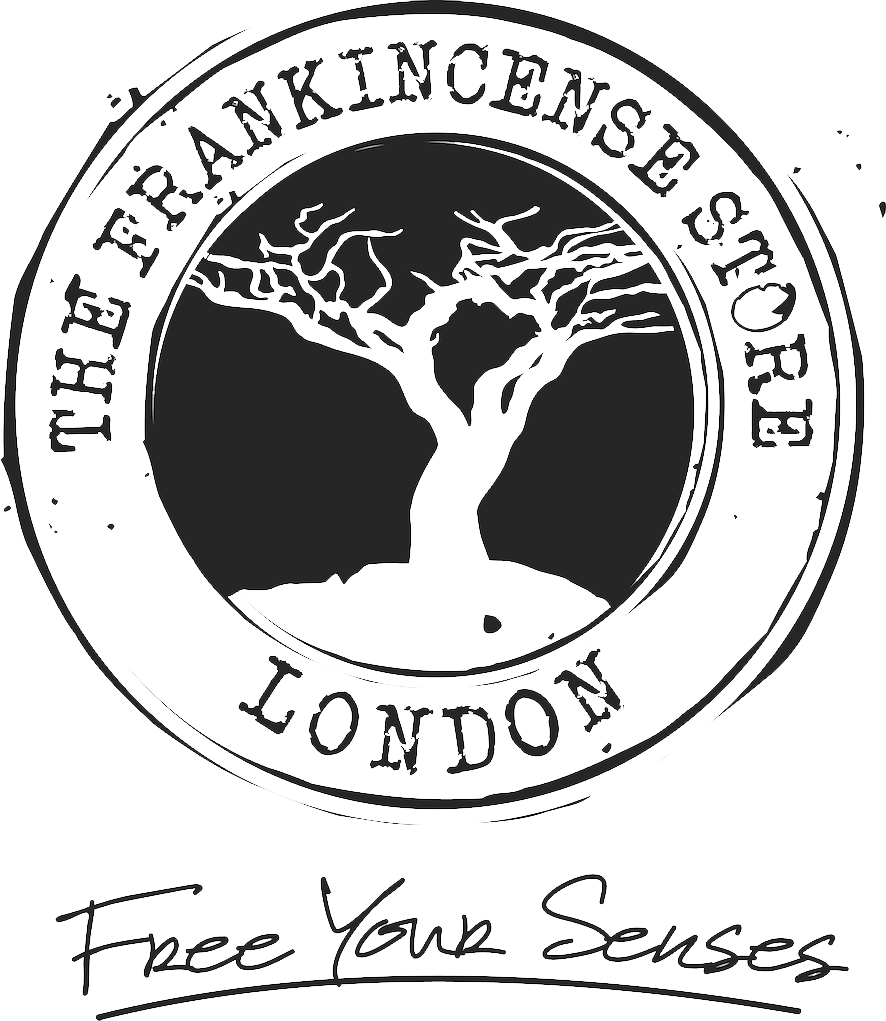Tapping Frankincense
Dried sap excluded from the boswellia tree.
What it is?
Frankincense is produced from the Boswellia Tree which is part of the botanical family Burseraceae. These trees are grown wildly in Somalia, Ethiopia, Sudan, Eritrea, India , Yemen and Oman. Each country produces a different species of the tree reflecting its quality and properties. The finest Frankincense known as Boswellia sacra comes from Oman. It is collected by tapping into the bark of the tree with a small axe. The milky sap that exudes hardens on exposure to air into tear shaped droplets, which is then easily picked by the collector about a week later. The tapping's continue on the same tree in the same place for continueup to 4-5 times, thus resulting on the grades. Tappings usually takes place in the autumn season known as the 'Khareef' in arabic. Frankincense quality varies every year due to the timing of the tappings between each interval, the location of the trees, climate and local customs. Once the bedouins have gathered and sorted the resins they are then ready for local merchants to collect them. It is then ready for the markets traders and wholesalers buyers like ourselves.
How is Frankincense tapped?
Most resin (whether myrrh or frankincense) is obtained by tapping: making deliberate incisions with a specially designed tool or ordinary axe, about 2 inches long, into the bark of the tree. The milky liquid that exudes, hardens on exposure to air into droplets or "tears," which are then easily detached by the collector about two weeks later. New tappings are made at the same place as old ones after removing hardened resin from the previous cut. If the tapping interval is short, then a light scratching of the wood is usually sufficient to cause the resin to flow again. The particular details of the tapping-the time of year it is undertaken, its duration, and the interval between individual tappings-vary according to the species and the customs in the area of production. For example, in Somalia there are usually two periods when Boswellia is tapped, each lasting 3-4 months, involving successive tappings at approximately 15-day intervals, with the timing of the tapping periods dependant on the extent of the rains. The resin is stored for about 12 weeks to harden. The only processing undertaken after collection is sorting and grading of the resins, usually done by the local merchant to whom it is sold rather than the collector

